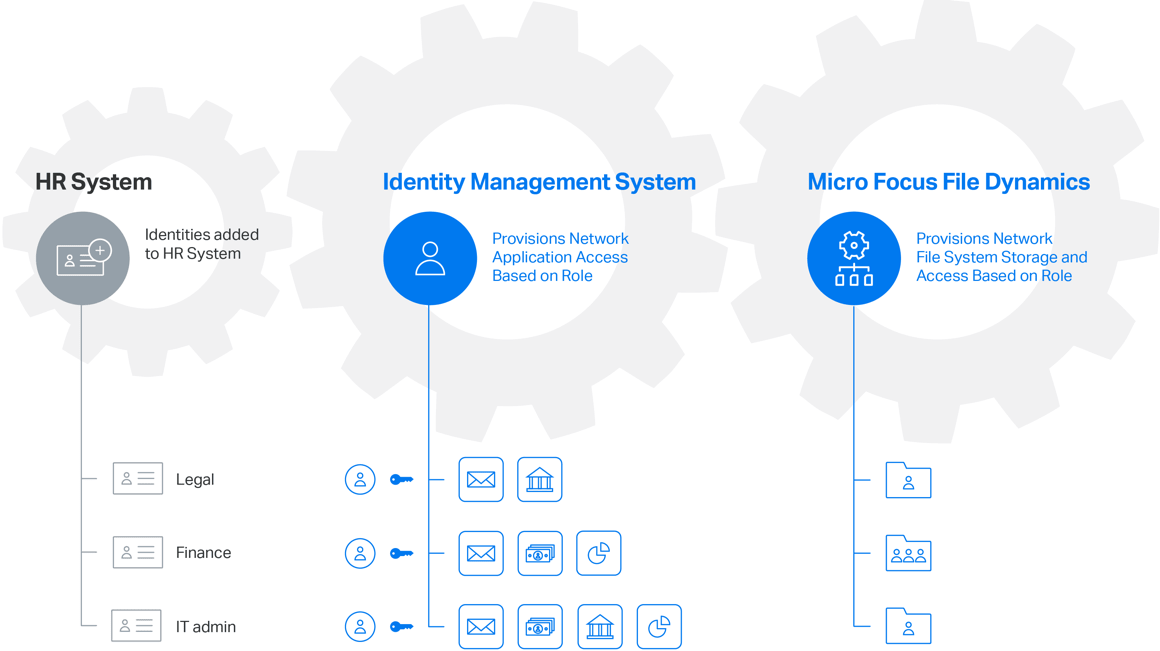An identity management solution that fails to provision and manage network storage is an incomplete solution. Use Micro Focus File Dynamics to extend the benefits of user lifecycle management to include automated user network storage management.
Because File Dynamics uses the same directory as your identity management system (Microsoft Active Directory), it can take user storage action when your identity management system takes user account action. When the identity management system creates a user account in the directory, makes the user a member of a group, and sets the user’s rights, File Dynamics can establish a network home folder for the user and provision it with documents the user needs. File Dynamics establishes the home folder’s location, access permissions, and disk-space quota according to the user’s role.
With File Dynamics, you can combine role-based application access with role-based storage provisioning and access.
When an employee changes roles and the identity management system reassigns access rights, File Dynamics can move and then update the user’s home folder by provisioning new documents, updating access rights, and more. Finally, when the identity management system removes a user account from Active Directory, File Dynamics can remove the user’s home folder from primary storage, either transferring it to an archive location or deleting it altogether.
File Dynamics works with any account provisioning or identity management system that populates user accounts into Active Directory.

